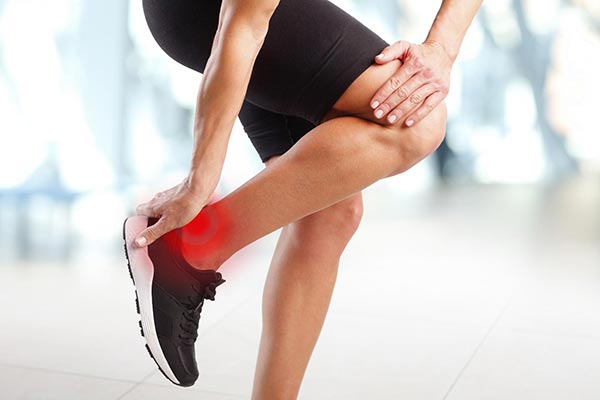Appointments: 702-966-1533 | Injury, Emergency, Trauma: 833-TXT-CHAN (833-898-2426)
Achilles Tendinitis / Tendinosis
The Achilles tendon is the largest tendon in the body, and it connects your strong calf muscles to your calcaneus, or heel bone. You use this to maintain balance when standing and when walking/running/jumping. Like any other tendon, the Achilles tendon is subject to lots of stress that can cause inflammation (tendinitis) and even undergo irreversible degeneration (tendinosis).

Types of Achilles Tendinitis
There are two types of Achilles tendinitis based upon location of the inflammation/degeneration. Non-insertional Achilles tendinitis affects the middle fibers of the tendon away from the heel. This is more common in younger, active people. In contrast, insertional Achilles tendinitis affects the lower portion of the tendon, where the tendon inserts, or attaches, onto the calcaneus. Older patients are more commonly affected.
Tendinitis of the Achilles is not necessarily associated with a specific trauma. It is usually caused by repetitive stress that a patient may not remember. It is also associated with patients that have tight calf muscles. Patients typically experience pain with standing/walking especially when they stand up out of bed in the morning or after a period of prolonged rest. The pain is along the back of the heel or tendon and is usually very sharp, even a tearing sensation. With tendinosis, or chronic degeneration of the tendon, patients also have thickening of the tendon where it hurts and often a bone spur that is formed by calcification of the damaged tendon fibers. The tendon damage increases the risk for complete rupture.
Diagnosis and Treatment of Achilles Tendinitis/Tendinosis
Diagnosis is typically made with patient history as well as clinical examination. X-rays may show swelling near the tendon as well as a heel bone spur. Rarely is an MRI or ultrasound needed to diagnose, but may be helpful for surgical planning, if necessary. Treatment is almost always started with conservative treatment using stretching exercises like the 'wall calf stretch.' This should be done 8-12 times per day. Shoes with a mild heel lift may help relax the tendon and thereby the pain. Anti-inflammatory medications may help with the pain and swelling too. A percentage of patients may require guidance with physical therapy. In most cases, it may take 3-6 months for the pain to completely subside.
If nonsurgical treatment fails, patients will require surgical management with debridement (cleaning) of the unhealthy scar tissue, resection of the heel spur, and reattachment of the Achilles tendon. Rarely, a tendon transfer is necessary if the Achilles tendon has significant damage. Physical therapy is an important part of surgical recovery.

